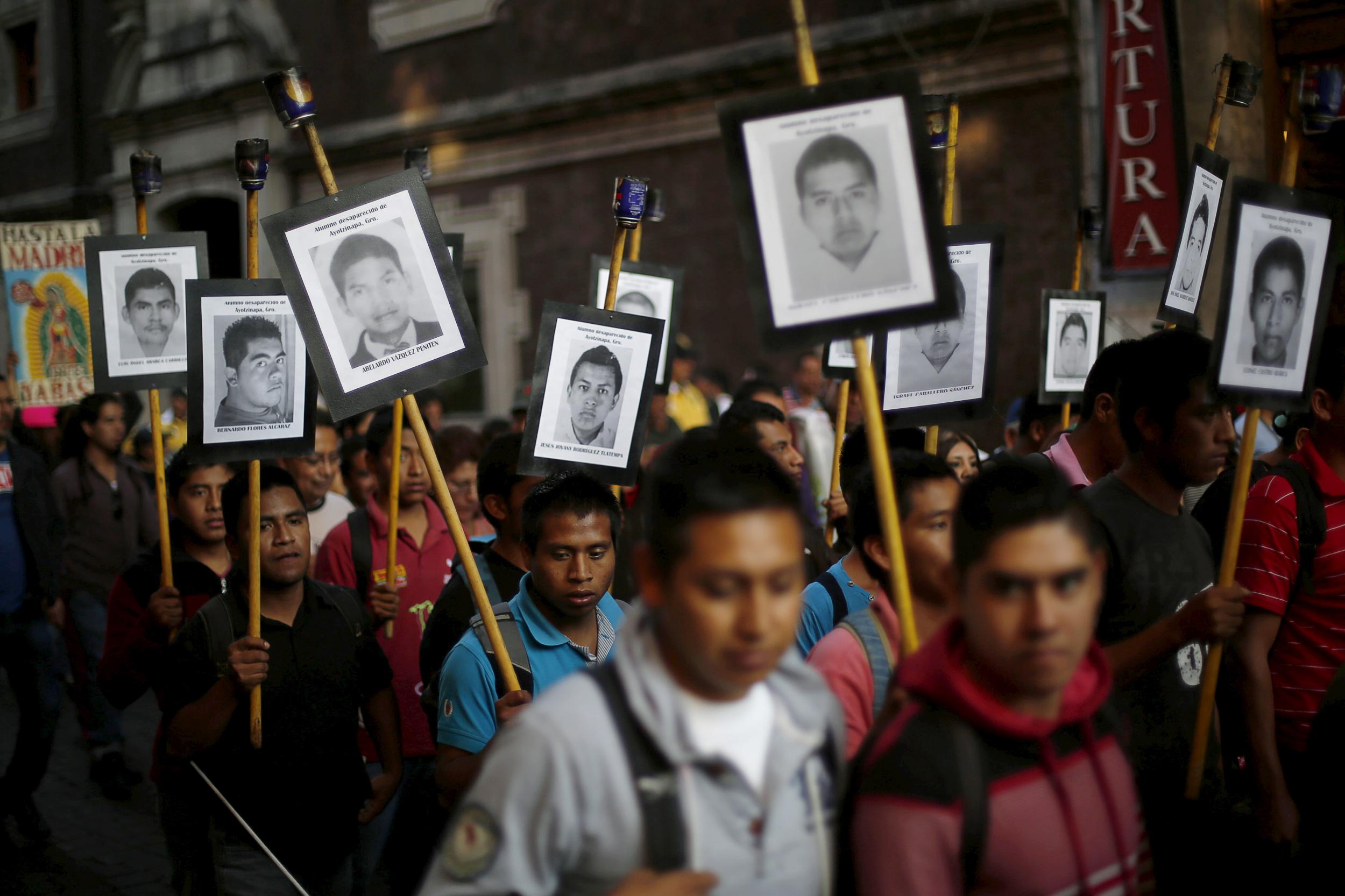Mexican cartel members who 'flayed boy's face off and gouged his eyes out' arrested in hunt for 43 missing students
Students already pronounced dead by authorities

Your support helps us to tell the story
From reproductive rights to climate change to Big Tech, The Independent is on the ground when the story is developing. Whether it's investigating the financials of Elon Musk's pro-Trump PAC or producing our latest documentary, 'The A Word', which shines a light on the American women fighting for reproductive rights, we know how important it is to parse out the facts from the messaging.
At such a critical moment in US history, we need reporters on the ground. Your donation allows us to keep sending journalists to speak to both sides of the story.
The Independent is trusted by Americans across the entire political spectrum. And unlike many other quality news outlets, we choose not to lock Americans out of our reporting and analysis with paywalls. We believe quality journalism should be available to everyone, paid for by those who can afford it.
Your support makes all the difference.Three cartel members have been arrested over the disappearance of 43 Mexican students in 2014.
Renato Sales, the National Security Commissioner of Mexico, announced the arrests on Friday. He suggested that the three suspects were members of the Guerreros Unidos crime syndicate, which is widely believed to have taken control of the students once they were abducted by corrupt police.
These latest arrests mean that 113 people have now been arrested, including 44 police officers, and yet the authorities have still not located the missing students.
The kidnapping happened on 26 September 2014, as a group of around a hundred students from Ayotzinapa Rural Teachers' College were travelling in buses to demonstrate at a conference being held by María de los Ángeles Pineda Villa, the wife of Iguala mayor José Luis Abarca Velázquez.
They intended to protest corruption and discriminatory hiring and funding practices on behalf of the government, feeling that they were discriminated against in favour of students from urban areas.
However, they were intercepted by police, and bundled into police-marked vehicles following a shoot-out in which six people died.
One student, Julio César Mondragón, was found dead the next morning with his eyes gouged out and the skin flayed from his face, leaving only a bare skull. Commissioner Sales stated that one of the men most recent arrested was being treated as the principal suspect in Mondragón’s death.
The other two suspects were involved in “receiv[ing] the young men from Iguala municipal police”, Commissioner Sales added.
The bodies of two of the 43 kidnapped students have been located. While the other 41 students are still unaccounted for, it is widely assumed that they have also been killed by Guerreros Unidos. Mass graves found by investigators turned out to relate to other unsolved crimes.
Guerreros Unidos means “United Warriors”: the name is also a pun on Guerrero State, the south Mexican region where the cartel is based and where the children were abducted.
The cartel is a splinter group of the larger Beltran Leyva Organisation (BLO), which fractured following the death of its leader Arturo Beltran Leyva in 2009. Formed by members of the BLO’s security team and hit squads, the Guerreros Unidos have since been involved in a number of bloody incidents, including a gunfight with the Mexican Army in June 2014 in which 22 cartel members died.
However, the Iguala kidnapping brought them under harsher scrutiny than ever before, and a number of cartel members have since been arrested, alongside the (now ex-)mayor of Iguala and his wife.
Mexico has the worst corruption rating out of all 34 nations in the Organisation for Economic Co-operation and Development.
Join our commenting forum
Join thought-provoking conversations, follow other Independent readers and see their replies
Comments